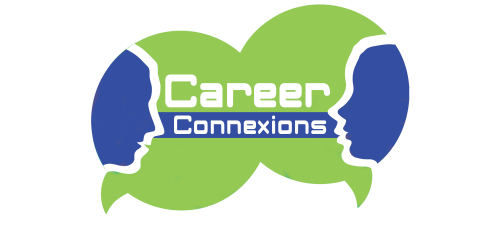Interviews are a necessity to land a job. Undoubtedly you have had one or many of them. A recent statistic stated that it takes six to nine interviews before you will get a job offer. Although this statistic is a function of many external factors (e.g., industry, competition for the job, etc.), it does suggest that it takes a considerable amount of time to land a job. It could be as much as a year (or more) if the job market is tight (i.e., few jobs) and/or the labour market is slack (i.e., too many available workers), Whatever the market is like, this statistic tells you it is important to do your best in every interview.

Introducing Value Propositions: The purpose of this blog is to introduce the idea of a Value Proposition (VP) and apply it to your next interview. You will be able to answer any interview question comfortably and effectively once you have one. A solid VP demonstrates knowledge of what your interviewer (i.e., possible employer) is looking for and how you meet their needs. Where a VP is most powerful is that it also showcases what is unique about you. Your specialties will be what separates you from the competition. You will likely find, even in the toughest markets, that you will not have to go through six to nine interviews to get a job offer!
VPs originated in the world of business, in particular marketing. The basic idea is that a business needs to know and clearly “message” their VP to customers to get them to buy their product. You can read more about business value propositions and see some examples by clicking here. The components of a business VP can be applied to careers, where you are the business, and the employer is the customer. In this sense, you possess a combination of qualifications and added value that you are “selling” to the employer. The employer will “buy” (i.e., hire) you if what you offer matches their needs.
Crafting Your Value Proposition: When building your VP, start with the employer’s needs. You should first focus on the job posting. Find out what is written and what is “in between the lines” that explains why the employer is looking to hire. Be sure to also research the company. The more you can connect what you offer to the company’s values and mission the better.
The rest of your VP comes from you. The first part is qualifications. Your qualifications include your background such as your education, experience, and accomplishments. You also need to communicate your expertise as it relates to the job. These qualifications are things such as your skills, competencies, and their associated levels. The key in creating your VP is matching these qualifications to what you see in the job posting. The second part is your added value. Often, your added value will separate you from the competition because it is unique to you! In one way, it represents “how you work”. So, you should include items such as your personality and even the things that most motivate you when working.
Once you have pulled together all the pieces of your VP, you can use it in an overall VP statement (also called an “Elevator Pitch”). Here is an example:
- VP / “Pitch” to a company looking to hire an experienced Project Manager: “With a PMP certification and over 7 years of experience, I have a proven track record of successfully leading cross-functional teams and delivering complex projects on time and within budget. My strong organizational, problem-solving, and leadership skills, combined with my attention to detail, ability to manage multiple priorities, and my overall supportive personality makes me an ideal candidate to drive project success and operational efficiency at Company ABC.”
This statement is an ideal answer to the critical interview question: ”Why should we hire you?”. It also forms the basis of possible answers to most other interview questions

Delivering Your Value Proposition: You can now readily create a VP and apply it in your interview. Since interviews are basically a series of questions and answers, you may only be able to use parts of your VP for some questions. The key is that you are consistent in using your VP throughout your interview. Also keep in mind that you will have to tweak your VP for each interview. Each employer has different values and mission statements in addition to varying reasons for why they have posted a job. Here is an example answer to a common interview question for the same Project Manager role:
- “Can you tell me about a time when you did not agree with a coworker?”: “In my previous role at Company XYZ, I was leading a cross-functional team on a project with a tight deadline. During the planning phase, one of my team members proposed a different approach to the project timeline than the one I had proposed. Instead of dismissing the team member’s suggestions, I encouraged open communication and collaboration by organizing a team meeting. I listened to the team member’s rationale and concerns, and I shared my perspective and the reasons behind my proposal. By using my approachable style and skills in negotiation and leadership, I facilitated constructive discussions, encouraged teamwork, and fostered a collaborative environment. As a result, we refined our project plan, incorporated suggestions, and developed a more efficient and effective project timeline that ultimately contributed to the successful completion of the project ahead of schedule.”
You can see the consistency between the earlier “Elevator Pitch” and the answer provided above. The statement was effectively tweaked to answer the interview question. To properly apply your own VP in an interview as shown above, you need to keep an open and analytical mind. Let your uniqueness also come through in how you deliver your VP based answers. Again, this is how you can separate yourself from the competition.
The last part of your VP delivery is a follow-up. Typically, it is an email sent after the interview saying thank you for the interviewer’s time and consideration. This email is also a chance to reinforce your VP as it relates to what was discussed during the interview. A great idea is to share something you believe would be of interest to the interviewer and further demonstrates your VP. A link to an article would be one such example.

To Wrap Up: Creating your Value Proposition will take time. Once you have your overall VP statement, you are on your way! You will need to tweak it when applying to different jobs since companies will have different reasons for hiring a new employee. And you will need to be open-minded and analytical during each interview. You can expect to have to adapt your VP depending on the question. You may only need to share one part of your VP. An easy example and common question is: “Tell me what is your greatest strength?”. You will need to pick only one of the many you will have in your overall VP statement. As mentioned above, the key is to be consistent throughout the interview in terms of your VP. A final note is you should review your VP from time to time. You will acquire new skills and earn new accomplishments in the future. These new parts of what you have to offer may deepen and/or broaden the types and levels of job you target in the future. You will have a richer VP along your career journey.
So, take the time to build your VP. It will be worth it! Your VP will also help you in other parts of your career journey such job searching (e.g., resumes, networking, etc.) and overall career development.
And be sure to revisit the blog page! A future blog will tell you how your VP can be used in conjunction with a Brand Image to create your overall Personal Career Identity. Another better approach to give you what you need to succeed!
